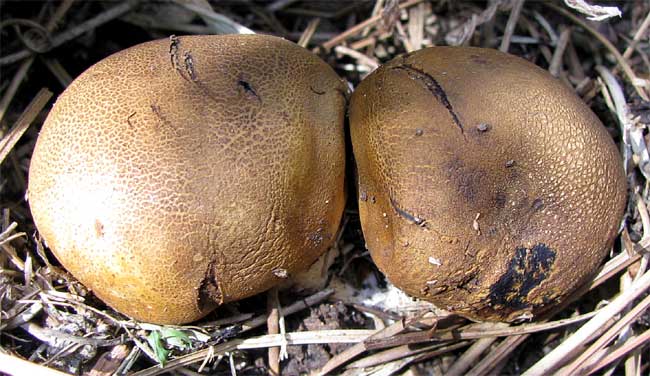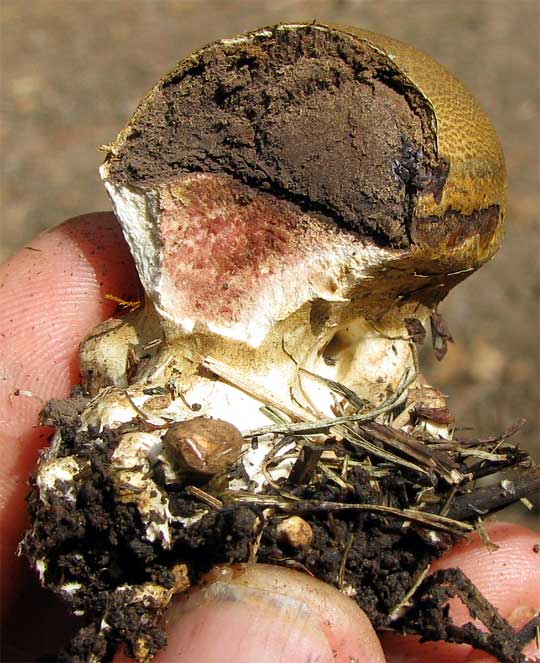Excerpts from Jim Conrad's
Naturalist Newsletter

from the September 6, 2009 Newsletter, issued from the Siskiyou Mountains west of Grants Pass, Oregon:
PURPLE-SPORED PUFFBALL
More "little brown potatoes" grew beneath some lilies in one of Anita's raised boxes but once I'd been sensitized to earthballs I began questioning whether they were the same thing, for they were consistently smaller and with a more mottled skin, as you can see above.
As soon as I picked one I could tell that it was much softer and lighter than the earthballs. However, neither did these show signs of producing an escape hole for the spores. A cross-section is shown below:

This one's skin is much thinner, there's a thick, white "stem" area, and the spore mass, or gleba, is brown instead of dark purple. Searching beneath the lilies I found old ones showing that upon maturity the fungus's fruiting body cracks and the resulting fragments peal back fairly haphazardly, enabling the spores to escape.
I'm 80% sure that this is CALVATIA CYATHIFORMIS, often known as Purple-spored Puffball, even though in my picture the gleba is brown. On the Internet other of this species often show the same brown color so I don't know what the deal is.
Calvatia mushrooms, considered to be genuine puffballs even though the have no holes in their tops through which spores can puff, are saprobic, which means that they feed on dead organic matter. This species is commonly found in lawns, pastures, golf courses and prairies. Often it forms fairy rings, or circles. The best known Calvatia is the Giant Puffball, one of which we encountered back at Polly's Bend in central Kentucky, still shown at https://www.backyardnature.net/n/x/puffball.htm.
It's interesting that this Calvatia puffball and the earthball are only distantly related species yet they've turned up in the same place at the same time looking so alike. I'm supposing that it's the old case of a specific growth form and appearance being optimal for any particular ecological niche, the niche here being much-watered garden soil.
When young with a white gleba this puffball is edible and good tasting.